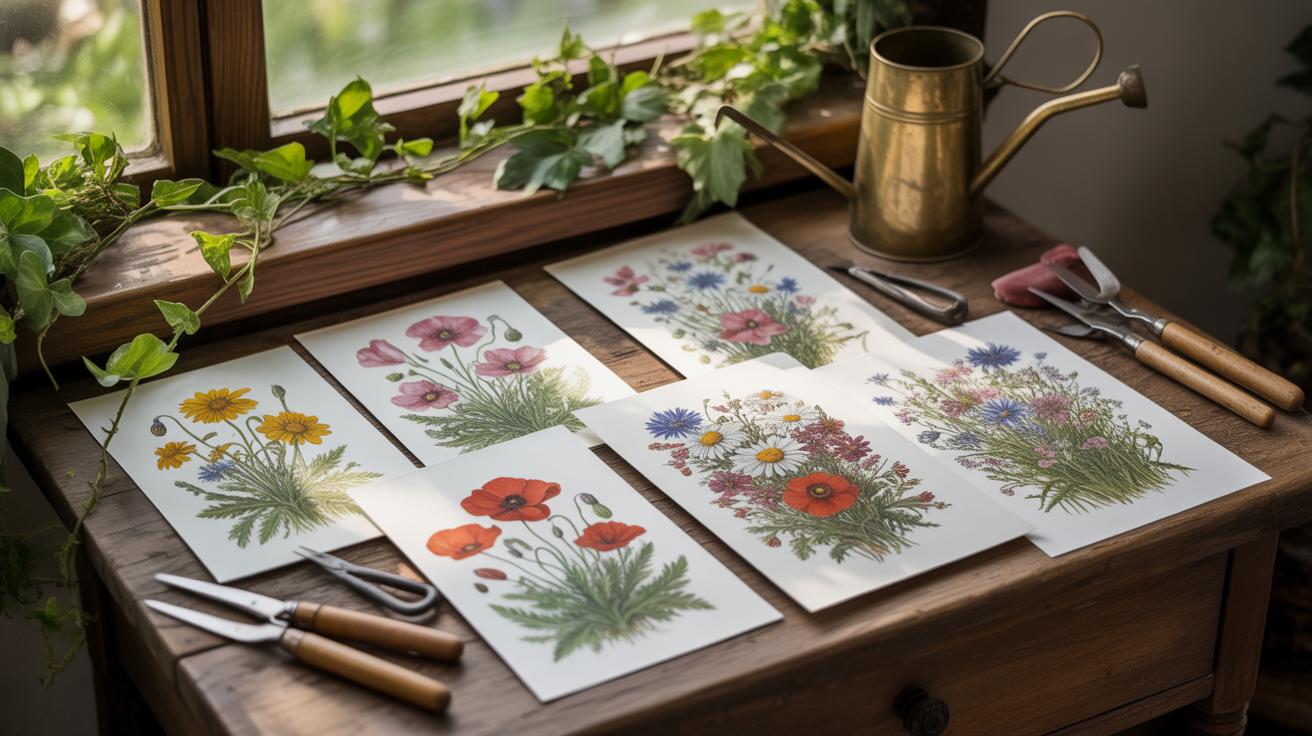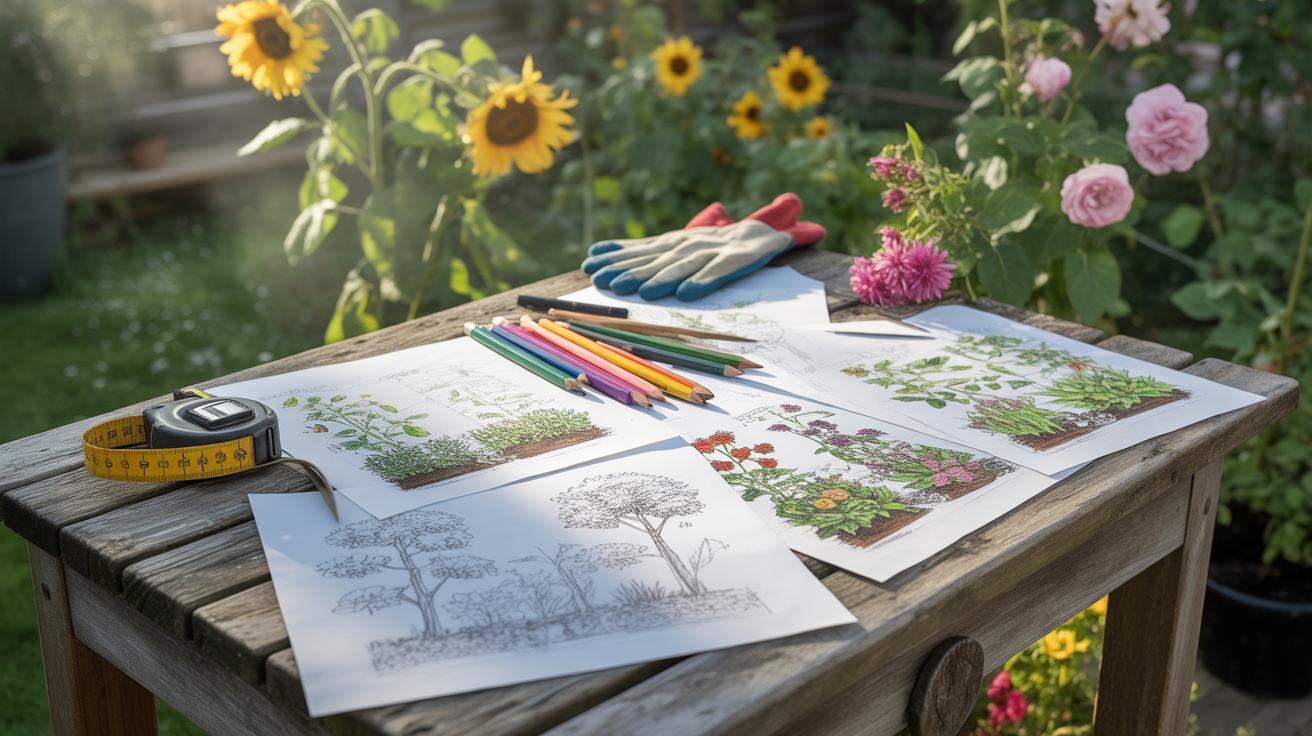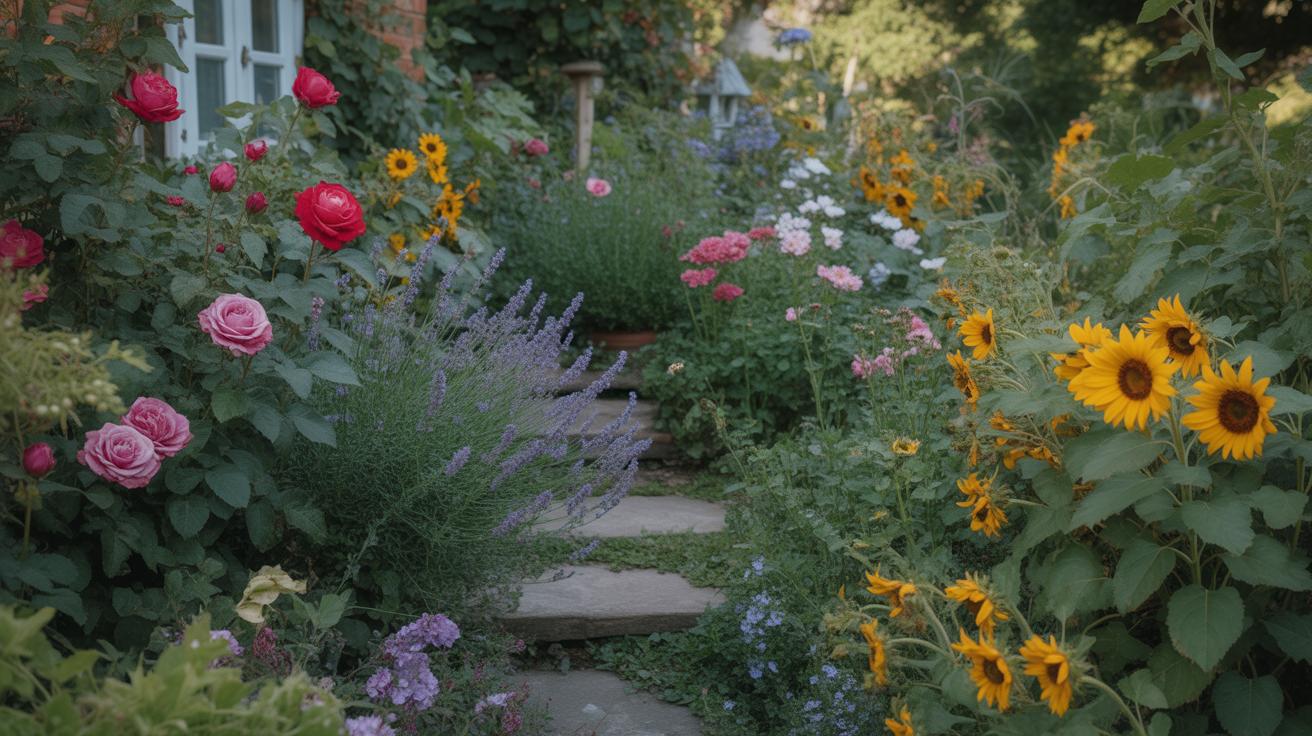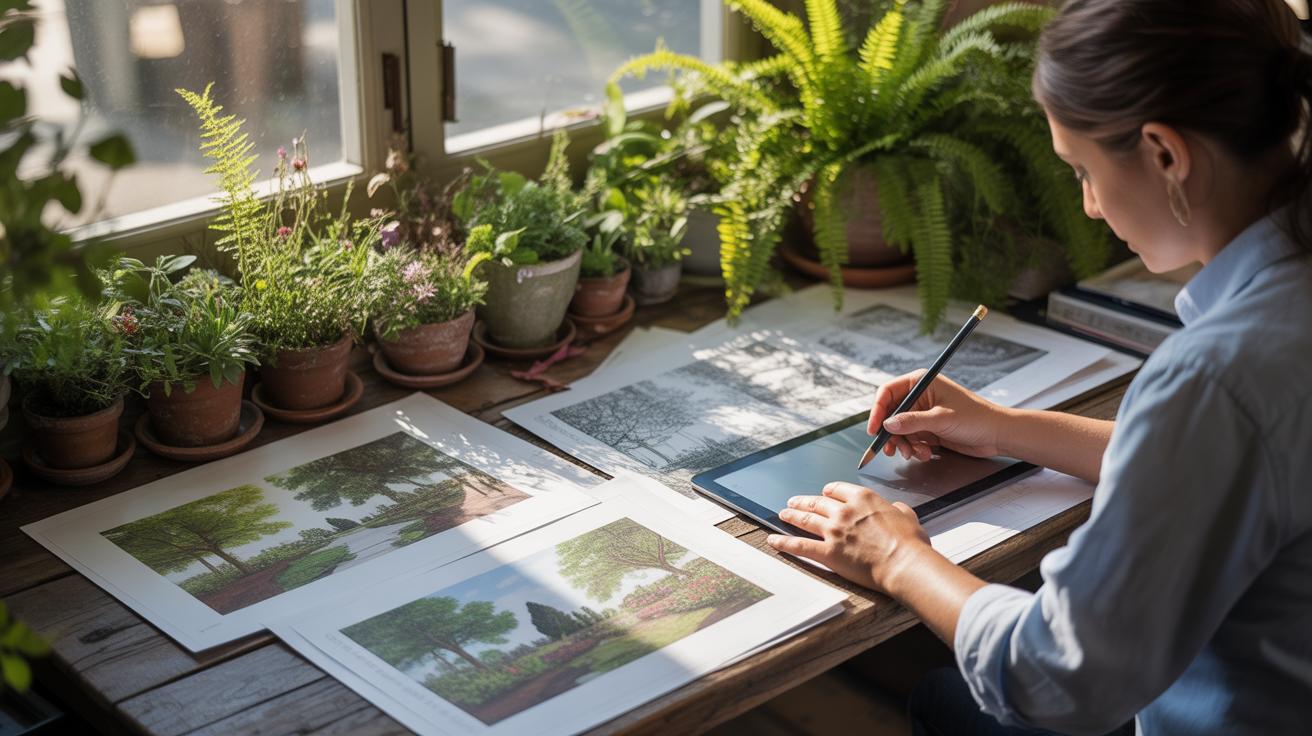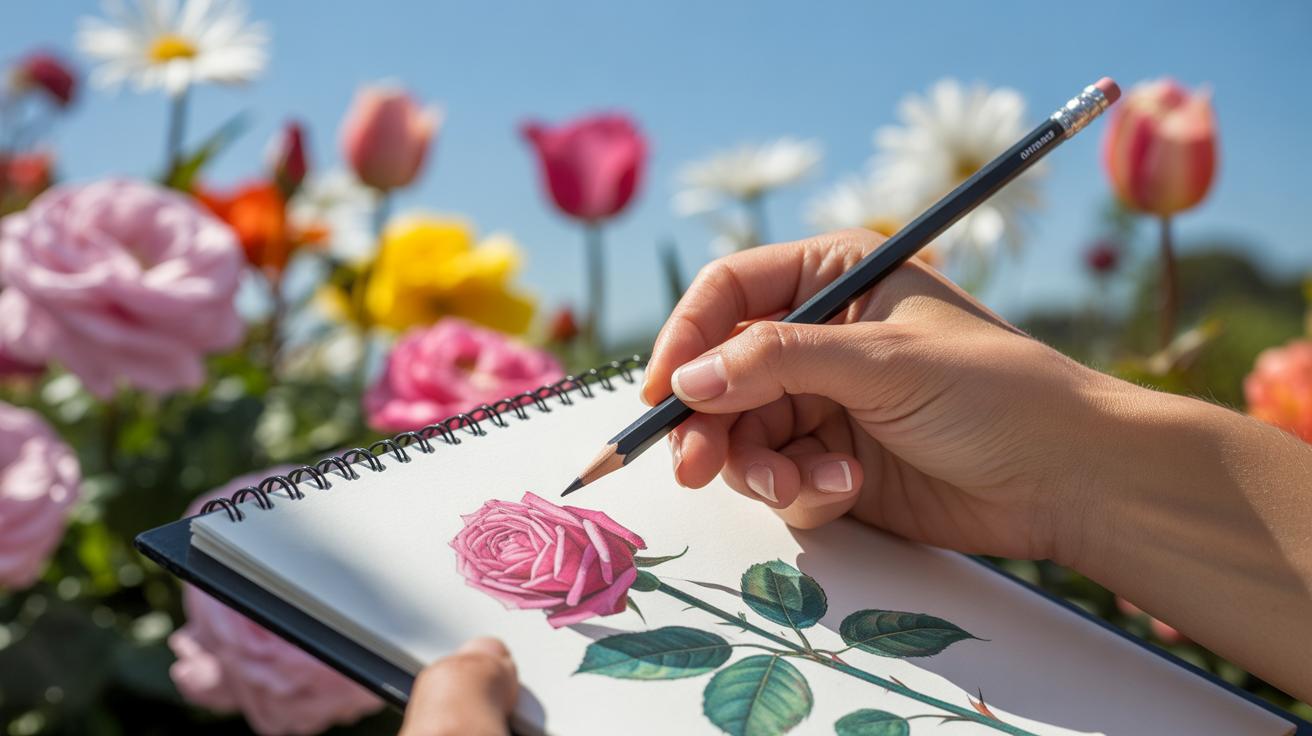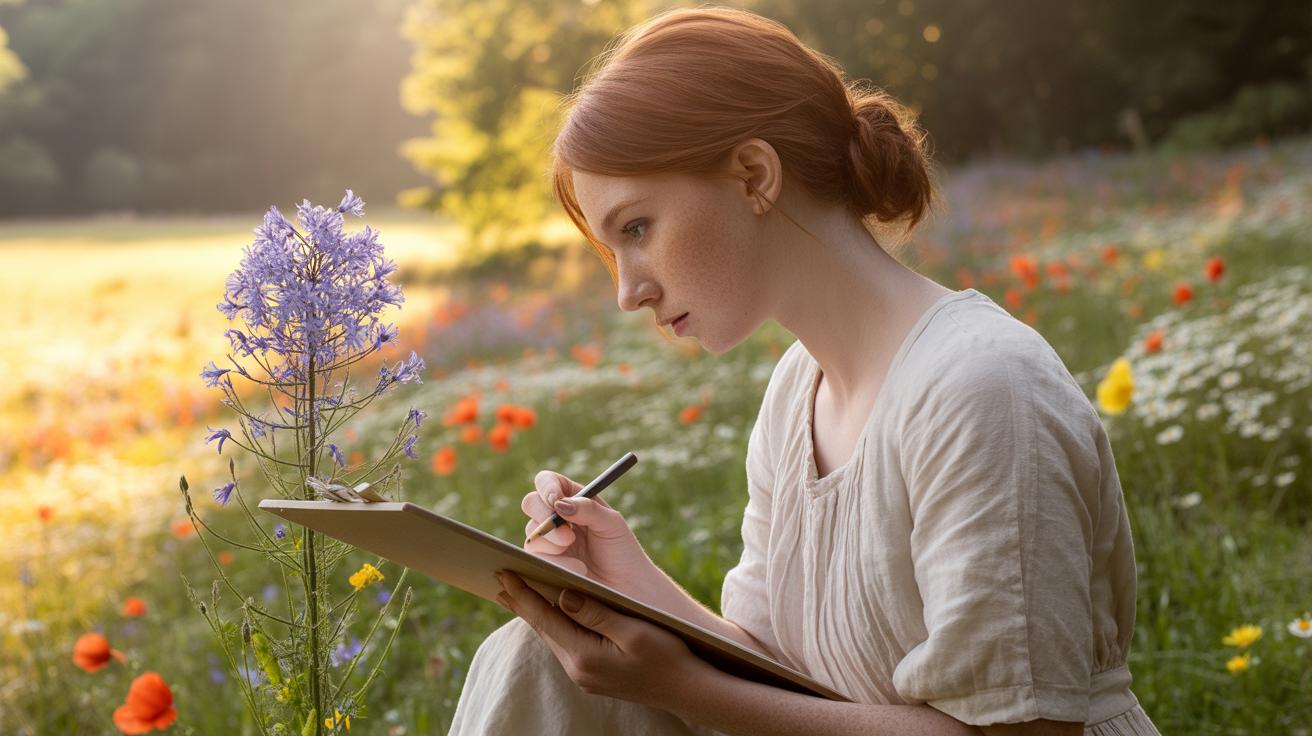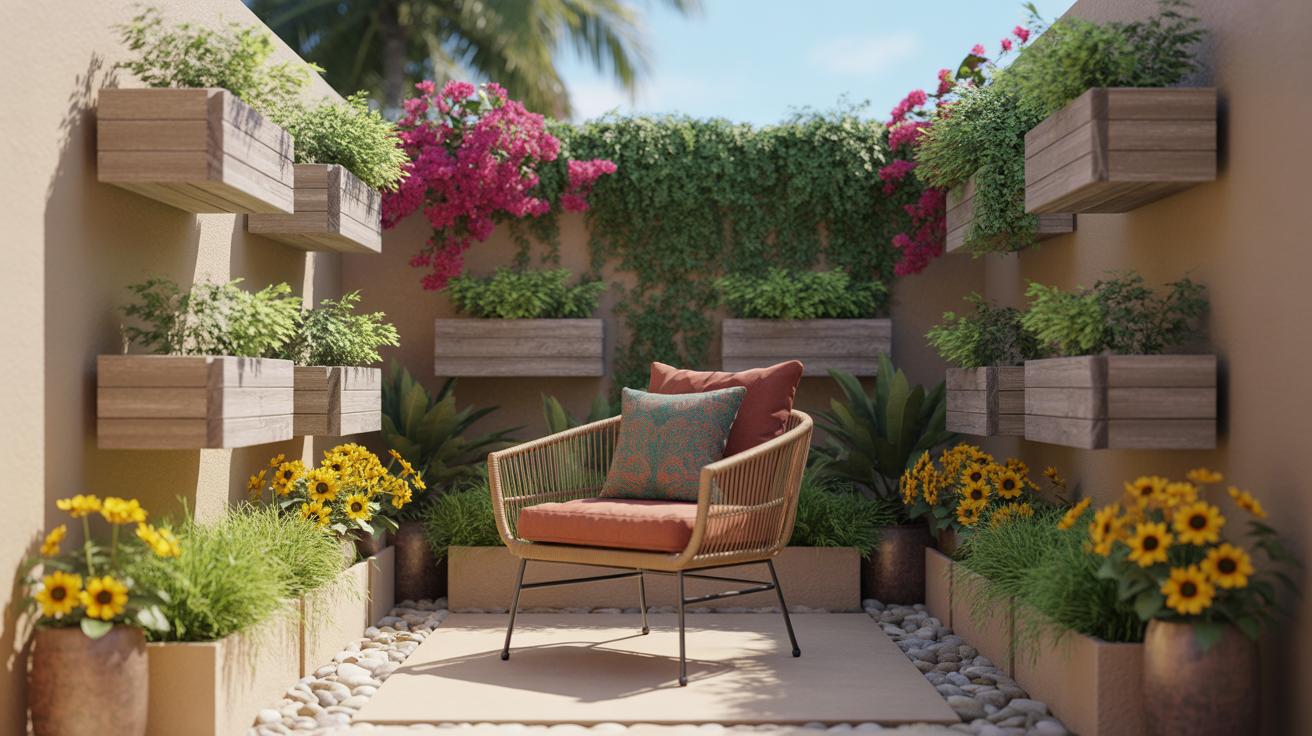
Free Garden Design Plans That Transform Small Outdoor Spaces
Introduction
Free garden design plans can help you make the most of your small outdoor space. These plans guide you in selecting the right layout and plants to create a beautiful garden without overcrowding. Whether your garden is a small backyard, balcony, or patio, proper planning ensures every inch is used efficiently. With a good design plan, you can transform your small outdoor area into a peaceful and functional space.
In this article, you will find practical advice on how to choose plants, prepare the soil, and organize garden features. We will also look at tools to assist your garden design and ways to maintain your garden for lasting beauty. By following these free garden design plans, you will gain ideas that fit your space and budget while adding charm to your home.
Steps to Plan Small Garden Layouts
When working with a small outdoor space, the first step is really just figuring out what you’re working with. Measure the size carefully—don’t just guess. Note down the shape, too, because an odd corner or curve can affect what fits where. Sometimes, those quirks become a little challenge or a chance to create a cozy nook.
Sun exposure matters quite a bit. You want to know which areas get sunlight and for how long. Some spots might be full sun, others shaded. This will affect plant choices, but also where to place seating or paths. Speaking of paths, think about movement. Sketch simple lines for how you’ll walk through the space. It doesn’t need to be fancy—just a clear idea of flow so you don’t cram the garden, making it feel chaotic.
Once you’ve measured and noted sun and paths, grab some graph paper or use a garden app (more on that later). Draw your space roughly to scale. Then, plot out places for plants, seating, features. You can move things around on paper much easier than digging it all up later. Try grouping plants by height or color, leaving some gaps for growth—you don’t want everything so tight it looks overcrowded or overgrown within a season.
Planning small layouts takes patience. I found that revisiting sketches after a few hours or even a day helps—sometimes ideas feel better after a break. So, a rough, flexible plan and some measured facts will set you up to make the most of your small garden.
Choosing Plants for Small Spaces
Choosing plants for small gardens isn’t just about size. Sure, compact and slow-growing varieties help save space, but don’t forget about multifunctional plants—they can provide flowers, food, or fragrance. Think about layering plant use throughout seasons too, so there’s always some interest, even in winter months.
Native plants usually fit well in small spaces because they’re adapted to the local climate and soil. They also tend to need less care, which means less fuss for you. Low-maintenance plants, like succulents or certain herbs, reduce the risk of overwhelming your garden with constant upkeep. But sometimes a splash of something bold or unusual makes the space feel alive, so a few statement plants might be worth squeezing in.
It helps to group plants with similar water and light needs together. That way, you won’t spend time guessing if this side should be watered differently or repotted more often. A small garden isn’t a reason to limit yourself totally, but it does push you to think carefully about which plants suit both your taste and your space.
Tools for Effective Garden Design
Planning your garden can feel tricky without the right tools. Measuring tape is a must for accuracy—don’t rely on memory alone. Graph paper works well for sketching your layout; it’s simple, tactile, and flexible. But if you want to go digital, there are free garden design apps that are surprisingly easy to use, even for beginners.
Apps like Garden Planner or Planter let you drag and drop plants, paths, and features into place. They sometimes include sun tracking and growth projections, which can be quite helpful. On the other hand, paper templates remain great if you prefer pen and paper—it forces you to think spatially in a way the screen might not.
Sometimes mixing analog tools like a notebook with digital apps makes the process less daunting. You can sketch roughly on paper, then refine or rearrange in a virtual plan. You might find one method clearer or more fun than the other—try both if you can. Having a plan you can tweak saves a lot of regrets once planting starts.
Soil Preparation and Improvement
Soil quality directly influences how well your plants grow. If the soil is poor, plants struggle—nutrients won’t reach roots properly, water won’t drain right, and growth slows or stops. On the other hand, good soil fosters strong roots and vibrant leaves. That’s why understanding and improving your soil is key, especially when working with limited space.
Start by testing your soil to see what it needs. Simple at-home tests can reveal acidity levels, texture, and drainage. For example, you can test drainage by digging a small hole, filling it with water, and timing how long it takes to drain. If water sits too long or disappears too fast, you might have drainage problems.
Knowing your soil helps you choose the right amendments. Organic materials like compost or mulch add nutrients and improve moisture retention. For sandy or clay soils, adding compost or peat moss changes the texture, making it easier for roots to spread.
Each plant type may prefer a slightly different soil condition. Acid-loving plants need a lower pH; others thrive in neutral or slightly alkaline soils. Adjust your soil accordingly, but remember, in small gardens, you must balance improvement without disturbing existing structures too much. Sometimes it’s a bit trial and error, but it’s worth the effort.
Testing Soil Quality at Home
You don’t need fancy labs to get a sense of your soil. Simple kits from garden centers work fine, but you can also use household items. For acidity, try vinegar and baking soda: a little soil in vinegar will fizz if alkaline; add baking soda to soil mixed with distilled water—bubbles signal acid soil. Texture can be felt by moistening soil and squeezing it; gritty means sandy, smooth and sticky suggests clay.
Drainage tests are quite revealing. Digging a hole and timing water absorption gives a practical idea of how well your garden soil handles water. Good drainage means roots won’t drown, poor drainage means you might need to improve structure.
Testing matters because the results influence every design decision—from plant choice to how you amend soil. Imagine planting moisture-sensitive plants in clay without adjustment—it’s a recipe for disappointment. Testing helps avoid that.
Amending Soil for Better Growth
Common amendments include:
- Compost: Adds organic matter and nutrients; improves fertility; best mixed into soil before planting or as a top layer in small spaces.
- Sand: Improves drainage in clay soils; use sparingly to avoid making soil too loose.
- Manure: Boosts nutrients; usually needs to be aged or composted to prevent burning plants.
- Peat Moss: Increases moisture retention and acidity; useful for plants that prefer acidic soil.
Timing matters. Amend soil a few weeks before planting so materials integrate. In small gardens, layering compost or mulch on the surface can be less disruptive and still effective. When adding sand or peat, mix thoroughly to avoid uneven spots where roots might struggle.
One experience I had was adding too much sand, thinking it would help drainage—but it ended up drying out my plants faster than I expected. It made me rethink how careful you need to be with amounts and types of amendments in tight spaces. Soil preparation is a balancing act, but when you get it right, your garden can really take off.
Ways to Maximize Vertical Space
Using vertical gardening techniques in small spaces opens up more room for plants when ground area is tight. Think about installing trellises against a fence or wall—they guide climbing plants like beans, peas, or morning glories upward rather than spreading out. Wall-mounted planters offer another option. By attaching shallow containers to a sunny wall, you can grow herbs or succulents without sacrificing precious soil.
Hanging baskets bring some charm by suspending flowers or greenery above head height, which feels cozy but keeps floor space clear. Tiered plant stands stack multiple pots vertically, making it easier to group plants with similar light needs close together. When you stack vertically, you don’t just get more plants—you create levels of interest and a sense of depth in a small garden.
Setting Up Vertical Structures
Installing trellises and supports requires a bit of planning. Secure them firmly to a solid surface—fence posts or brick walls work well—so they hold up under plant weight and wind. Use materials like untreated wood or metal, which resist weather better over time. For safety, make sure anchors and screws are tight and check them regularly.
Some plants naturally want to climb, like cucumbers, nasturtiums, or sweet peas. Others might need gentle tying to supports as they grow, especially heavier fruits like tomatoes. So, matching plant type to structure is key—you don’t want a delicate vine on a heavy, rigid trellis or a rigid plant without support.
Benefits of Vertical Gardening
Vertical gardening frees up your limited ground space, letting you pack more plants into the same footprint. But that’s not all; growing upward often improves air circulation, which can reduce issues like fungal diseases in crowded beds. Plants get better access to sunlight, improving their overall health and yield.
Visually, vertical elements add texture and height contrasts that make a small garden feel less cramped. You might even find yourself more drawn to sitting or spending time there since it looks more layered and inviting. It’s a bit like resizing your garden without tearing up anything—just looking at it differently.
Using Color and Texture for Interest
When selecting plants for your garden, color and texture are your best friends. Try to mix different leaf shapes—think broad, rounded leaves next to slender, pointed ones—to create visual variation that doesn’t feel overly planned. Flower colors can be mixed in several ways. You might want bold contrasts, like purples paired with yellows, or softer transitions using varying shades within the same color family. Both can work, depending on what mood you want.
Height plays a subtle role, too. Tall plants at the back with shorter ones in front create layers and depth, making a tiny garden feel larger than it is. Sometimes, though, a cluster of a single height and color can be calming—so don’t feel pressured to always do the ‘layered’ thing.
Take a look at your local nursery and see which plants catch your eye. You might be surprised by what combinations feel right. For example, mixing fuzzy leaves with glossy ones adds more than just visual interest; it makes the space tactile, almost inviting a closer look. Using plants like lamb’s ear alongside smooth-leafed hostas is one way to play with that idea. Have you thought about how colors behave in different light? That shifts throughout the day, which can change how your garden looks—and that’s part of the fun.
Creating Color Harmony
Selecting a color scheme can feel overwhelming, especially if your garden space is small and you want it to feel peaceful rather than chaotic. Complementary colors—those opposite on the color wheel, like blue and orange—create sharp contrast and can energize a space, but too much might feel busy.
If calmness appeals more, try a monochromatic scheme that varies shades and tints of a single color. For example, different greens blended with soft whites can soothe the eye. Notice how sometimes color schemes that look perfect on paper don’t translate as expected when you actually plant them. It might take a bit of trial and error—so maybe start with containers or test patches before committing.
Mixing Textures in Garden Design
Textures in your garden don’t just mean how things feel—though that’s part of it—they’re also about how your eye travels across surfaces. Combining smooth, glossy leaves with spiky flowers or fuzzy foliage can keep the space interesting and less predictable. When you layer plants with different textures, you create a sense of movement. For example, soft ornamental grasses next to bold textured plants like agave or yucca add dimension without overwhelming the space.
Try to avoid grouping too many similar textures in one area—or the garden risks looking flat and dull. Sometimes that means you might need to prune or replace a plant if it outgrows its textural purpose. The goal is to keep the eye moving across the garden, so your space never feels static or stale.
Planning for YearRound Appeal
Keeping a small garden attractive throughout the year takes some thought, especially when space is limited. Evergreen plants play a crucial role here. Think of boxwoods, dwarf conifers, or even small hollies—they provide a steady structure and a splash of green when everything else is bare. I find that these plants act like the garden’s backbone, holding the scene together even in the dull months.
Alongside evergreens, you want a few seasonal bloomers scattered around, carefully planned to stagger their flowering times. Early spring bulbs like crocuses or snowdrops sneak in color just as the cold loosens its grip. Later, plants such as lavender or coneflowers can carry things through summer and fall.
Timing your garden chores can be a little tricky but makes a big difference. For instance, prune spring-flowering shrubs right after they bloom, so you don’t cut off next year’s buds. Fall is a natural moment to mulch, protecting roots during winter and preparing soil for spring growth. I admit, it sometimes feels like there’s always something to do—planting, pruning, watering—but it keeps your garden healthy and appealing every season.
Common Mistakes to Avoid in Small Gardens
Avoiding Overcrowding Plants
One frequent error in small garden design is putting too many plants too close together. It’s tempting to fill every inch with greenery, but overcrowding leads to competition for light, water, and nutrients. You might think more plants equal a fuller look, but in reality, they often struggle and look scraggly instead.
Give each plant enough room to grow by checking their mature sizes before planting. Spacing isn’t just about current needs—it’s about anticipating how big they’ll get. For example, a compact shrub now might double or triple in size in a couple of seasons. Leaving that margin avoids a cramped, chaotic space later. And don’t forget to think vertically, too. Using height wisely can let you fit more without crowding the floor.
Selecting Suitable Plants
Choosing the wrong plants is another common pitfall. Many people pick showy or fast-growing varieties without considering the local conditions or space constraints. What works in a large garden can quickly overwhelm a small one.
Slow-growing, drought-resistant, or compact plants generally suit small outdoor spaces better. They demand less maintenance and won’t outgrow their spot as fast. For example, think of dwarf conifers or certain sedums instead of sprawling vines or large hedges. Matching plants to your soil type, sunlight exposure, and climate also helps your garden thrive without you constantly intervening. Sometimes, less truly is more when it comes to plant selection.
BudgetFriendly Garden Ideas
Creating and maintaining a small garden doesn’t have to drain your wallet. You can often find useful materials around your home—or neighbors’—to give your garden a fresh look without buying new stuff. For example, old wooden crates or pallets make great planters once cleaned and treated, lending a rustic charm to any corner. Even broken pottery can be repurposed as plant markers or quirky containers.
Propagating plants yourself saves money and lets you experiment with your garden’s growth. Try simple methods like taking cuttings from herbs or houseplants you already have. Just snip a healthy part, place it in water or moist soil, and wait. Seeds can be collected from fruits or flowers you grow; just plant them during the right season and watch new life sprout slowly but surely. It’s not always instant or guaranteed—sometimes cuttings fail—but it feels quite rewarding when they take root.
DIY garden features add personality without a big price tag. You can transform tin cans, glass jars, or plastic bottles into hanging planters with a bit of paint or twine. Old chairs might become plant stands or mini benches with a fresh coat of weather-resistant paint. Sometimes, a simple stack of stones or a handmade stepping stone using leftover concrete can create interesting focal points. Don’t overlook the power of creativity—it stretches limited budgets far more than you might expect.
Maintaining Your Small Garden
Keeping a small garden thriving means staying on top of a few key tasks. You don’t need a big crew or fancy tools, but you do need a routine. Think of it like a simple checklist to keep your plants happy, starting with watering, pruning, fertilizing, pest control, and cleanup.
Try this schedule:
- Watering: Most small gardens benefit from watering two to three times a week, but watch your soil; it will tell you when it needs a drink.
- Pruning: Trim dead or overgrown parts monthly to encourage healthy growth and keep things tidy.
- Fertilizing: Feed plants with a balanced fertilizer about once a month during the growing season; don’t overdo it though—too much fertilizer can stress plants.
- Pest Control: Check plants weekly for signs of pests, and act quickly if you notice anything unusual.
- Cleanup: Clear fallen leaves and debris every couple of weeks to prevent fungal issues and discourage pests.
You might feel tempted to water daily, but in a small garden, that can cause root problems or waste water. Finding a rhythm that suits your plants is key. And pruning—well, it’s a bit like haircutting for your garden. Skip it too long, and things get wild; do it too often, and you might stunt growth.
Watering Tips for Small Gardens
Watering can be tricky when space is tight. Using drip irrigation is a good call because it puts water right at the roots without much waste. If setting up drip lines feels a bit complicated, try watering early in the morning instead. The cool air means less evaporation—so more water reaches the roots.
Also, avoid splashing water on leaves too much; that can invite disease. You’ll notice that some plants drink more than others, so tailor the watering to individual needs rather than just spraying everything uniformly. Ever tried using a simple watering can with a narrow spout? It lets you focus on each plant and avoid overwatering.
Managing Pests and Weeds
Dealing with pests and weeds is a constant battle. You could reach for chemicals, but those can harm beneficial insects or the soil, especially if you’re not careful. I find that using natural controls—like introducing ladybugs or hand-pulling weeds—works well when the space is small enough to manage personally.
Neem oil sprays or insecticidal soaps offer gentle backup options if pests get out of hand. For weeds, maybe you could try mulching around plants to choke off growth, reducing how often you have to dig around. There’s something satisfying about spotting a stubborn weed and pulling it out by hand. It makes you feel connected with your garden, even if it’s a bit of a chore.
Still, it’s a balance you’ll adjust over time. Sometimes a few weeds don’t hurt, and a few harmless bugs can coexist without wrecking your garden. The challenge is knowing when to step in—and when to just watch and wait.
Conclusions
Using free garden design plans helps turn small outdoor spaces into inviting gardens that meet your needs. They provide simple steps for creating layouts, selecting suitable plants, and using space wisely. Your garden will benefit from good preparation, smart plant choices, and clever use of garden features. This keeps your garden manageable and attractive through the seasons.
As you grow more confident in garden design, keep exploring new ideas and tools. Your small garden can offer a relaxing retreat or lively space for gatherings. With planning and care, even a small garden has the potential to add great joy and value to your home environment.




